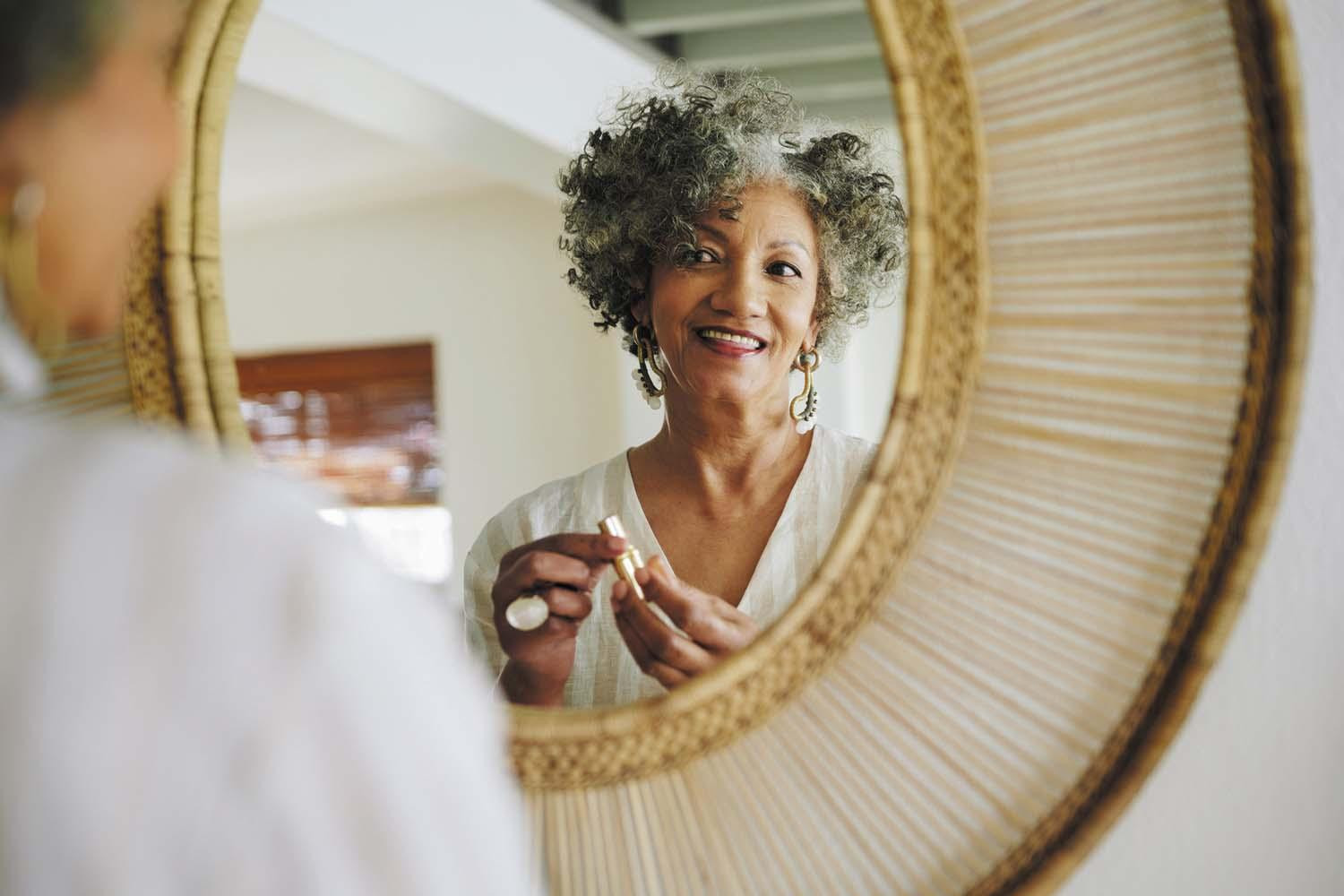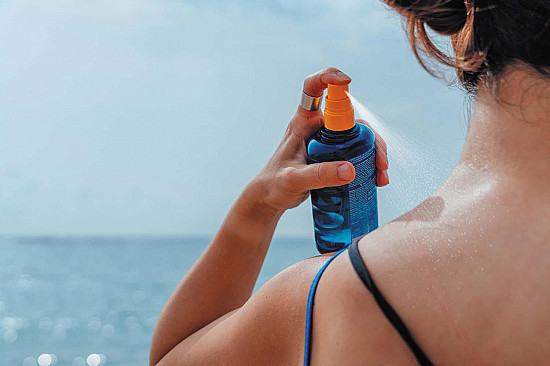Fresh-faced through the years
Preserve more youthful skin with tailored, nonsurgical strategies.
- Reviewed by Toni Golen, MD, Editor in Chief, Harvard Women's Health Watch; Editorial Advisory Board Member, Harvard Health Publishing; Contributor

Candice recently went through a difficult divorce at 55. Simultaneously re-entering the workforce and the dating game, the mother of two came to Dr. Sandy Tsao, a dermatologist at the Laser and Cosmetic Center at Harvard-affiliated Massachusetts General Hospital. But Candice’s idea of meeting the moment was to try every conceivable aesthetic procedure in an effort to turn back the clock.
Dr. Tsao listened to Candice’s concerns and tempered her expectations. She’s seen many women like Candice who are “contemplating a lot of decisions that are not necessarily the right ones because of the emotional weight they’re bearing,” Dr. Tsao says.
Together, they agreed on a strategy that involved injecting botulinum toxin (Botox, Dysport, Xeomin) to ease fine lines in her forehead and around her eyes. Then they tackled facial brown spots and sagging skin with laser treatments. Dr. Tsao also encouraged Candice to maintain a simple but effective skin care regimen to optimize skin health.
“She got the boost in appearance she wanted, which gave her the self-confidence she needed—all without going to extremes,” Dr. Tsao says.
Candice is hardly an anomaly. For most people, especially women, looking younger — or holding signs of aging at bay — is a high priority, Harvard experts say. Perhaps unsurprisingly, women are more likely than men to invest time and money to accomplish this, according to a 2024 study in the journal Psychology and Aging.
“There’s intense societal pressure to look young,” says Dr. Rachel Reynolds, interim chair of the Department of Dermatology at Harvard-affiliated Beth Israel Deaconess Medical Center. “You may feel your skin doesn’t match how you feel on the inside, and want to resolve that discordance.”
Dr. Tsao resoundingly agrees. “Appearance plays a very important role in how we fit into society, and ultimately our emotional well-being,” she says.
Skin aging basics
What happens to our skin as it ages — and particularly around menopause? As the largest organ, the skin joins virtually every other body part in chronicling the effects of falling estrogen levels as menopause nonsurgical approaches. Estrogen fuels the production of oil and other substances that moisturize and protect the skin. When levels drop, skin can’t hold moisture as effectively, leading to dryness, dullness, and irritation. Estrogen decline also coincides with diminishing production of collagen, a type of protein that makes skin firmer.
“Many women come to me around the time of menopause saying they notice their skin is much dryer or has more prominent wrinkles,” Dr. Tsao says.
But just how a person’s skin changes as she ages can vary greatly. “People with lighter skin types that don’t tolerate sun exposure as well can develop brown spots, crepey wrinkles, skin laxity, and rough skin texture,” Dr. Reynolds says.
Many factors lead to signs of aging. You can’t change the genes you inherit, but they offer strong clues to how your skin will change as you age. On the other hand, some factors you can control, such as sun exposure, which breaks down collagen, and smoking, which decreases blood flow to skin.
Lifestyle and skin care measures
A variety of measures — none of which involve a scalpel — can help you preserve a more youthful appearance. Tops on the list is protecting your skin from the sun every day, even during winter. Wear sunscreen with a sun protection factor (SPF) of at least 30 to lower your risk of wrinkles, brown spots, and skin cancer.
The next one can be harder to achieve: prioritizing sleep. Experts recommend getting seven to eight hours each night. “When we’re deprived of sufficient quality sleep, we turn on an inflammatory process in the body that will show up as tired-appearing skin,” Dr. Tsao says. “We see an exaggeration of wrinkles, facial folds, and sallowness.”
Certain active ingredients in skin care products can also confront aging skin’s biggest nemeses:
Alpha-hydroxy acids exfoliate dead skin cells and reveal smoother skin underneath.
Retinols and retinoids are forms of vitamin A. Rigorous scientific trials have demonstrated they reduce signs of skin aging by ramping up cell turnover, combating fine lines and sun damage, Dr. Reynolds says. They also boost collagen production and help lighten dark spots.
Vitamin C cream or serum acts as a skin “brightener” and antioxidant, reducing sun damage while also improving the appearance of wrinkles and fine lines.
Hyaluronic acid draws water to the skin and traps it within cells to retain moisture.
Moisturizers improve skin’s smoothness, softness, and flexibility. Common individual ingredients include glycerin, shea butter, aloe vera, and various natural oils such as coconut, sunflower seed, jojoba, tea tree, and grapeseed.
“Your skin care routine doesn’t have to be complex, and you don’t have to spend a lot of money—there are lots of affordable options in the drugstore,” Dr. Tsao says.
Minimally invasive approaches
Most people seeking to reclaim a more youthful look don’t turn to plastic surgery, according to the American Society of Plastic Surgeons. Indeed, fewer than 100,000 facelifts are performed each year in the United States, and minimally invasive procedures such as Botox injections or dermal fillers account for 83% of the total number of aesthetic procedures.
Most people seeking the latter want to soften wrinkles and tighten lax skin, lighten brown spots, and fill in hollow areas, Dr. Tsao says. And they’d like to do so with procedures involving minimal downtime and a low risk of complications.
But you can take it too far, even without plastic surgery. “One of the biggest mistakes people make is they want to look like a celebrity or model, which is just not realistic,” Dr. Tsao says. Work with your dermatologist to reach your appearance goals, such as creating a natural appearance without being too aggressive.
The following cosmetic procedures are tapped most often, Harvard experts say:
Botox is the most popular minimally invasive facial treatment in the United States, with about 9.4 million such procedures performed each year. When injected into the skin, the toxin — a type of protein — blocks signals from nerves to muscles, relaxing them and reducing the appearance of wrinkles. Results typically last three to four months, and regular use can also help prevent new wrinkles from forming.
“The key is tailoring the treatment to the individual,” Dr. Tsao says. “We no longer aim for a frozen appearance, so we place the neurotoxin in a way that makes it look natural but softened, without looking like you’ve received Botox.”
Hyaluronic acid injections (Juvederm, Restylane) are also called dermal fillers because they add volume to various facial areas and reduce the appearance of wrinkles and folds. Performed more than five million times annually in the United States, fillers can be used in the tear troughs, lips, cheeks, crow’s feet, and smile lines. Results typically last between six months and two years.
“The patient who benefits most has a lot of hollowing or thinning of the face that she didn’t have earlier in her life,” Dr. Tsao says. “I frequently use fillers in a very conservative fashion to lift the cheeks, soften the tear trough area under the eye, create fuller lips, or soften upper lip lines.”
Laser treatments use varying wavelengths of concentrated light beams to zap wrinkles, sun spots, acne scars, and other skin imperfections, triggering collagen production.
“Lasers are very effective at reducing brown spots, unwanted dilated blood vessels, and facial redness,” Dr. Reynolds says. “Different lasers come with different degrees of downtime and risk. You should consult with a dermatologist to match the procedure with what you’re trying to achieve.”
Chemical peels involve applying a specially formulated acid solution to the face, which removes the top layer of skin cells. This process can ease wrinkles and fine lines and make the skin “glow.” “Peels are usually done more often to remove brown spots and fine lines, but you can get some skin tightening as well,” Dr. Tsao says. Recovery can take a few days to a few weeks, depending on the strength of the peel.
Ultimately, there’s no one-size-fits-all treatment combination or skin care regimen that’s guaranteed to preserve youthful skin, Harvard experts say.
“You have to customize the treatment to the patient,” Dr. Reynolds says. “Someone may combine topical retinoids along with injectables and laser treatments, or may do only one or two of those things. It depends on your age, the cost, and the amount of downtime you’re comfortable with.”
This article is brought to you by HarvardHealthOnline+, the trusted subscription service from Harvard Medical School. Subscribers enjoy unlimited access to our entire website, including exclusive content, tools, and features available only to members. If you're already a subscriber, you can access your library here.
Image: © mapodile/Getty Images
About the Author

Maureen Salamon, Executive Editor, Harvard Women's Health Watch
About the Reviewer

Toni Golen, MD, Editor in Chief, Harvard Women's Health Watch; Editorial Advisory Board Member, Harvard Health Publishing; Contributor
Disclaimer:
As a service to our readers, Harvard Health Publishing provides access to our library of archived content. Please note the date of last review or update on all articles.
No content on this site, regardless of date, should ever be used as a substitute for direct medical advice from your doctor or other qualified clinician.
















